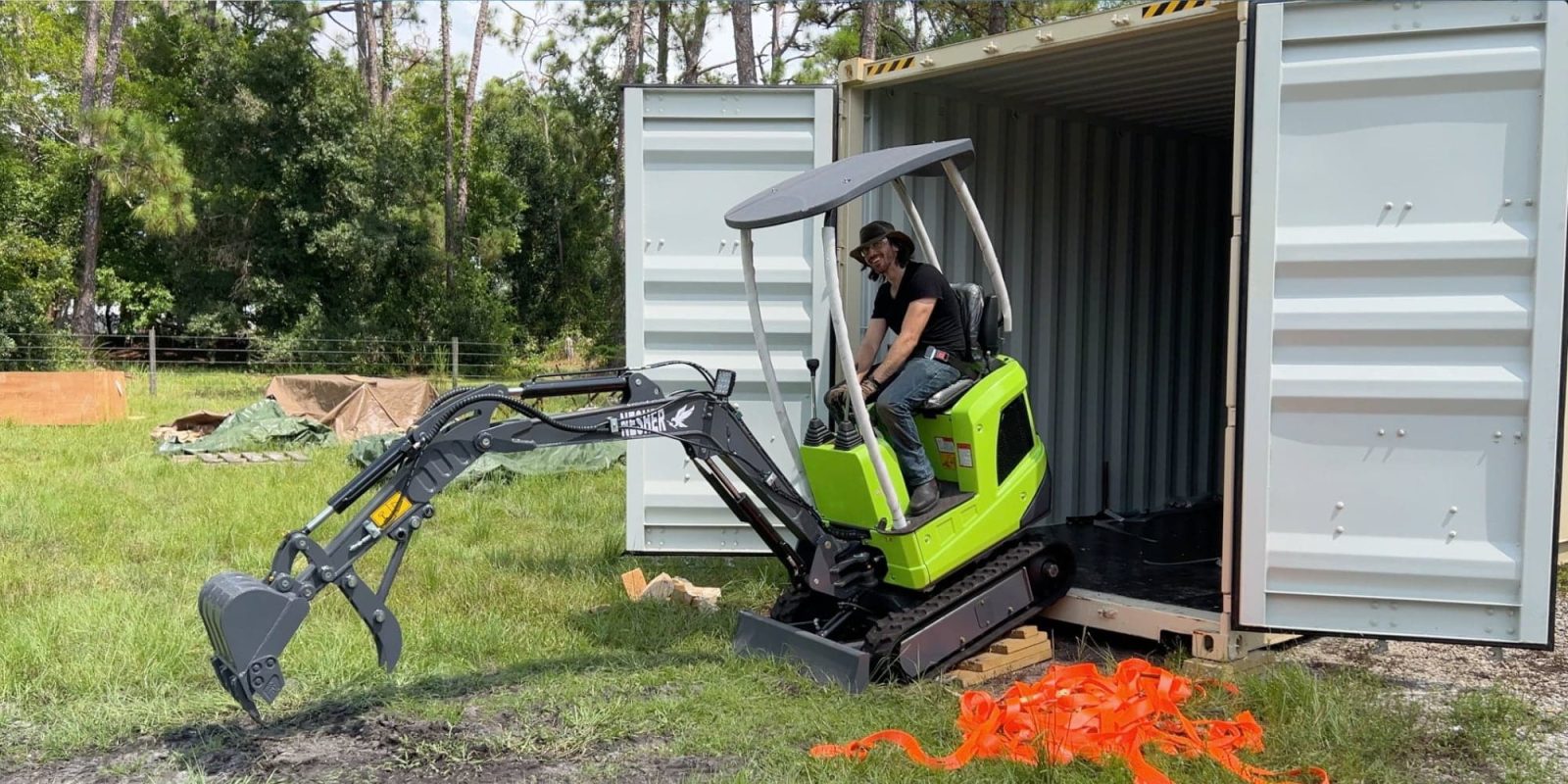
This isn’t exactly my first time dropping a container full of Chinese electric vehicles in the yard and cracking it open with childlike glee. But it is likely one of the most unique experiences I’ve had so far doing this, revealing inside a fleet of battery-powered Chinese electric mini-excavators and assorted accessories.
If you’ve followed my escapades in my articles and videos for any amount of time, you’ll know this is pretty much par for the course for me. I’m the guy who imported that viral $2,000 Chinese electric mini-truck that netted tens of millions of views around the internet. I followed that up with electric boats and electric tractors and all sorts of other fun EVs from the world’s largest and most controversial electric vehicle market.
This time though, things are getting serious as I get to work. Or, at least work-related vehicles, as my latest import is a pile of electric mini-excavators. So buckle up and join me for the journey! And if you want to see the process in full moving pictures, check out my fun container unboxing video here to get this experience first hand.
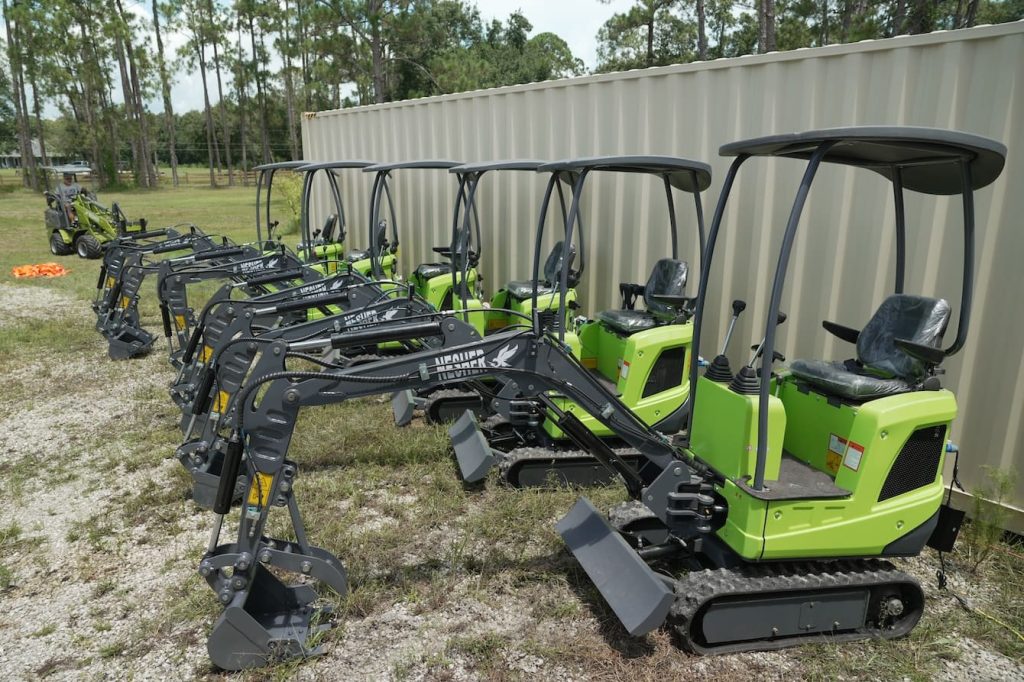
In case you’re wondering how I got here, it all started with a need for an electric wheel loader – a type of articulating tractor that is useful for a wide range of land managing tasks like digging, loading, hauling, trenching, towing, and more.
My parents live on a bit of land in Florida and needed a few machines to help keep up with chores around the property. They don’t need a massive tractor, but some modest machines would be a big help.
As it turns out, there actually are a few smaller articulated wheel loaders available for these types of homesteaders and landowners – folks who don’t really need a $50,000 diesel Bobcat like you’d see on a contractor’s job site.
However, the family didn’t really want a diesel machine. With the advent of electric alternatives, the advantages of lower operating costs, safer working environment, reduced maintenance, and quieter/more peaceful operation were too hard to pass up. Our family has an electric mini-truck and an electric UTV, both of which are major work vehicles for us, and the experience has driven home just how much nicer it is to own and operate electric alternatives of common work vehicles.
The problem is that when it comes to electric tractor loaders and electric excavators, there just aren’t many options. Nearly everything out there is diesel. Without finding any options for such machines in the US, I went to the world’s largest electric vehicle maker: China. There I found several options that were a good step in the right direction, but weren’t quite ready for prime time in their existing form. With a good starting point, I worked with a factory that I liked to improve the machines for North American operators.
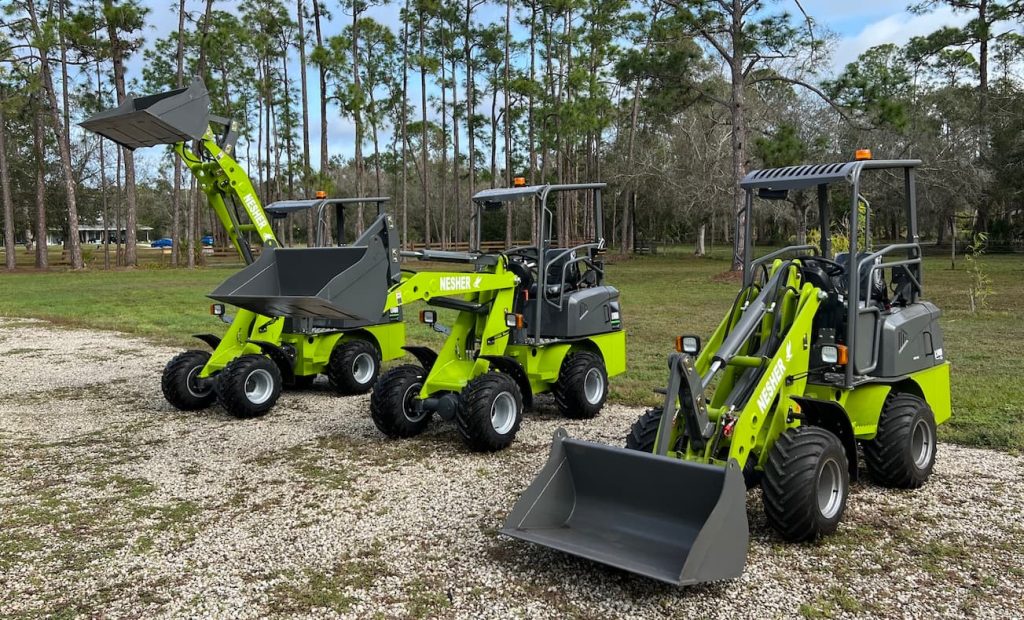
After making a number of safety, quality, and ergonomic improvements to the equipment, the machines became the first NESHER electric loaders in a growing lineup. Developing into a small business run by my father and me, we’ve now been able to hire a couple of staff and have since shipped electric machines all over the US.
The next logical step in growing was to expand into dedicated mini-excavators, which could dig deeper and do more than just the excavator attachment available on the NESHER L880 and NESHER L1400 loaders. So I repeated the process but for excavators this time, working with a suitable factory to improve their machines to my ideal design intended to better serve North American users.
Having now gone through this container importing process many times over the last 18 months or so, this time I thought I’d bring you guys along on the process of cracking one of these open.
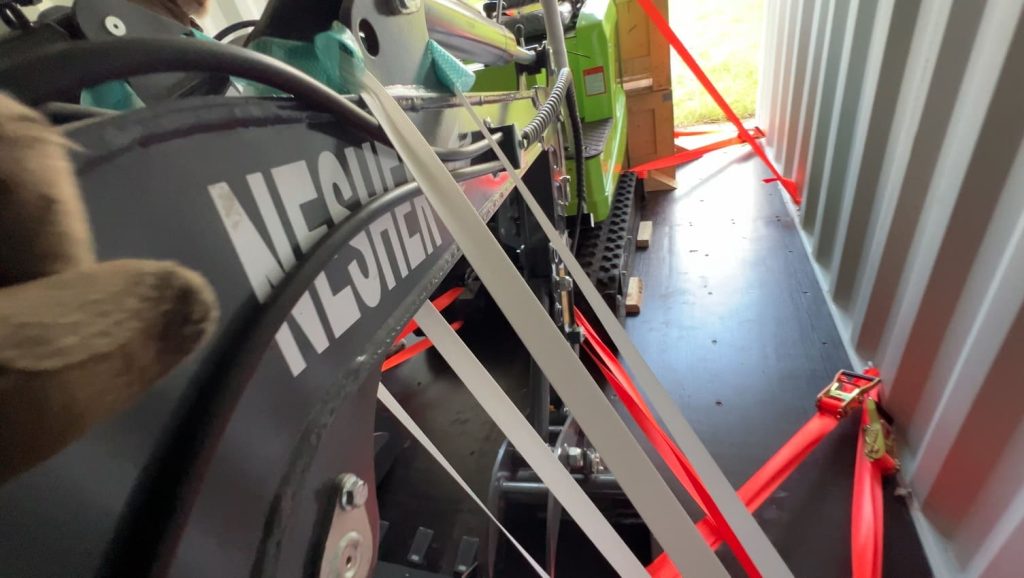
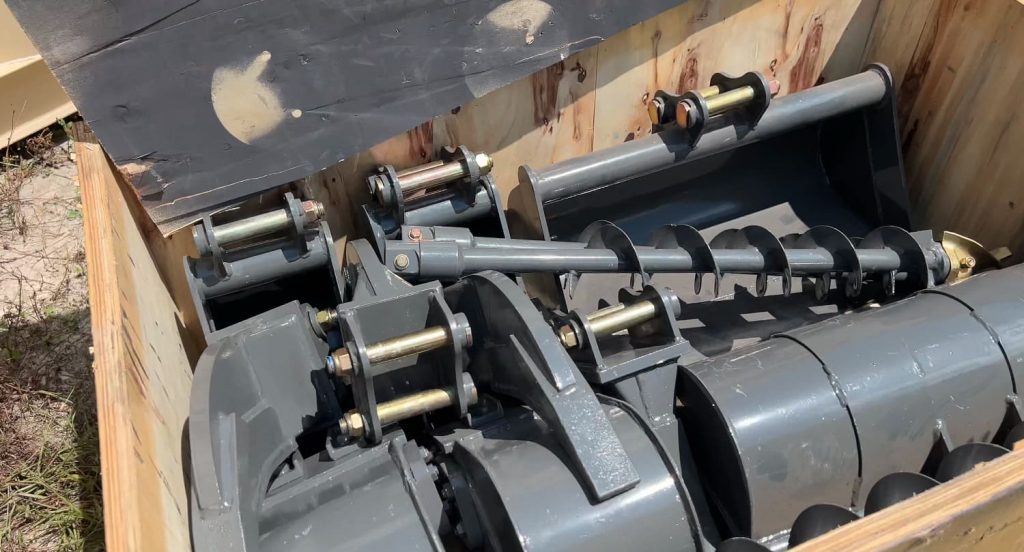
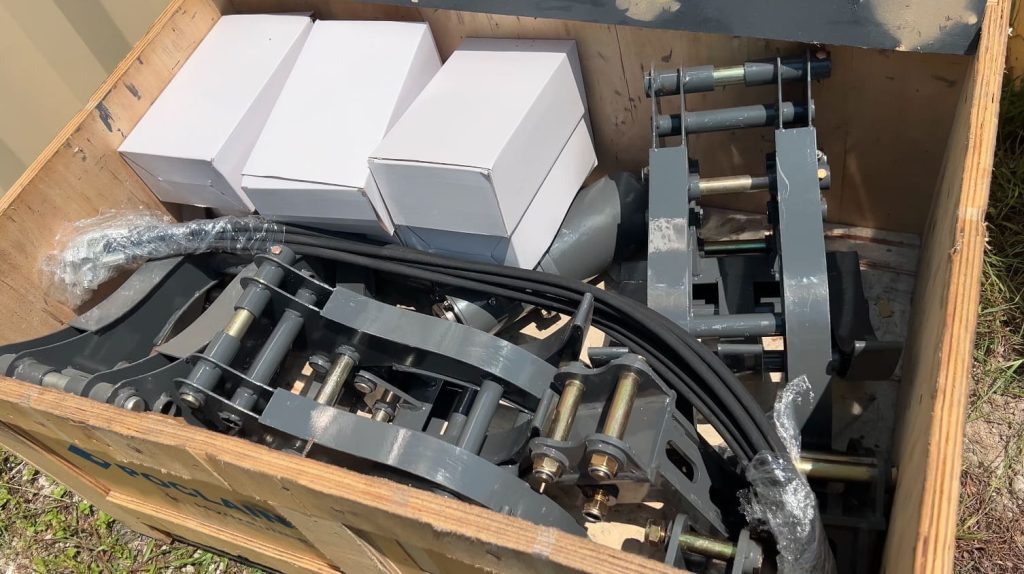
First of all, any one of these containers takes months to set up. It starts with working with the factory designers and engineers, then negotiating pricing, fronting the production, dealing with inevitable production delays, quality inspections before shipping, booking sea freight, working through customs and handling tariffs, setting up incoming freight, and finally landing the container at your doorstep.
It’s a long and arduous process with each step full of headaches, but having done this with a dozen or so containers at this point, it’s starting to become easier and smoother.
When the container finally arrives after those many months of work, the real fun starts. I cracked this one open and got to work unloading the crates of mini-excavator attachments, such as grapples, augers, ripper teeth, various buckets sizes, rock hammers, etc.
Next came the machines themselves. I always make sure my factories package my machines extra well. It’s not as much the long ocean journey I’m worried about, which is relatively gentle. Rather, the first and last few hundred miles on the back of a truck chassis can bounce things around more. We use a spiderweb of strapping and a small army of ratchets to ensure every machine and attachment is safe and secure for the journey.
They are each unloaded down the ramps and go through an initial quick inspection looking for any obvious issues, like problems with the hydraulics or tracks, then driven off to staging. Once all of the machines are out and the container is cleared out, the more intensive inspections begin. Each machine is put through a few hours of work to suss out any potential issues that were missed at the factory. Occasionally this turns up something small, but thorough quality inspections at the factory mean that any real issues get caught before they arrive stateside.
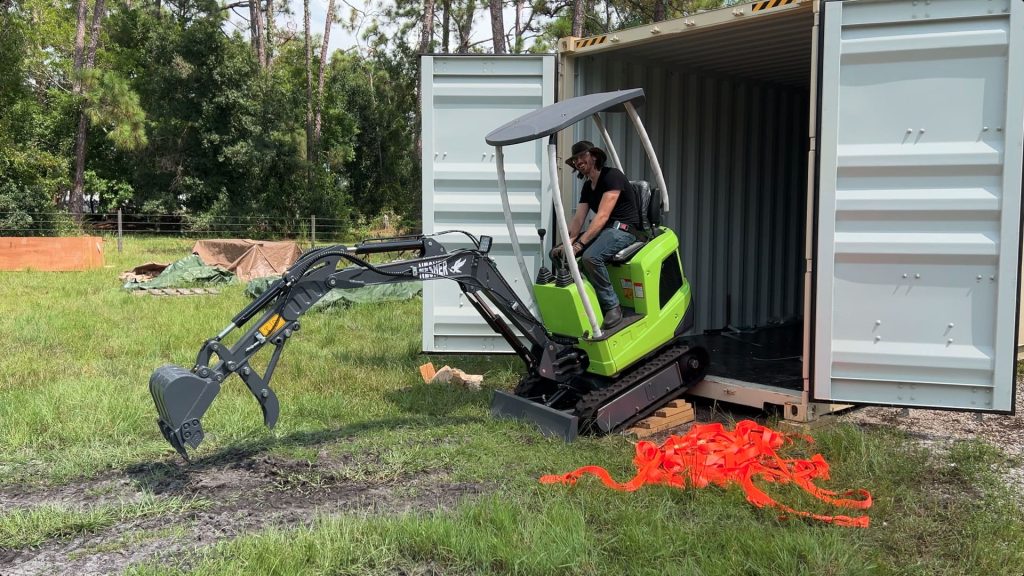
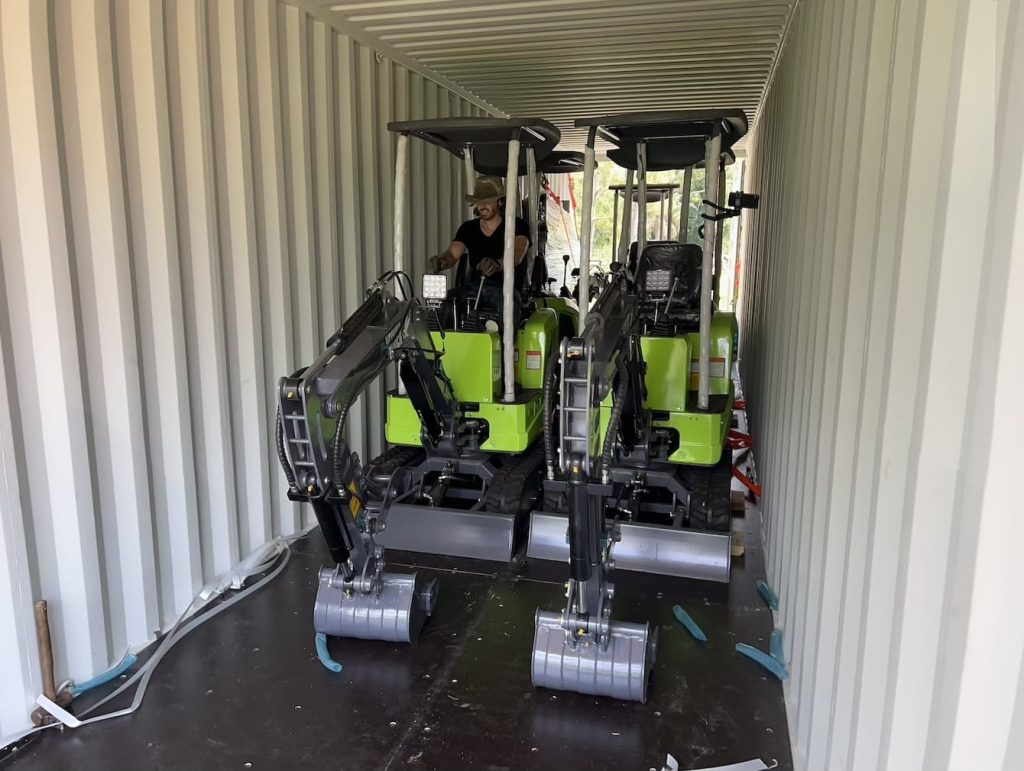
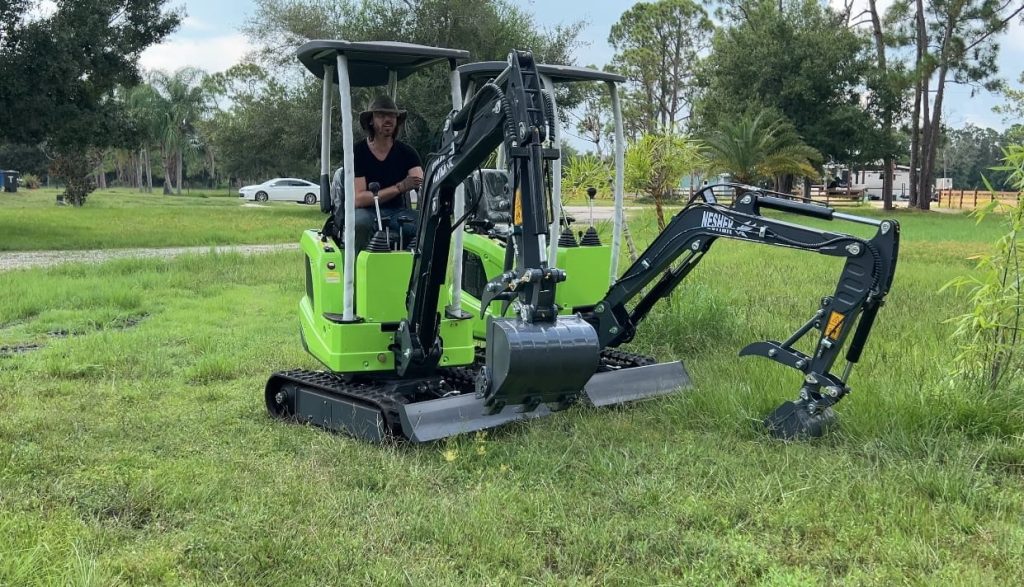
I’d be lying if I said the inspection process isn’t fun, because it basically means we get to play around with all of the functions. And there’s something about digging holes with small-format heavy equipment that just brings out the inner child in you.
These are fairly small machines – the NESHER NX2500 model name hints at the 2,500 lb (1.1 metric ton) weight of the mini-excavator. With a 5.5-foot (167 cm) digging depth, they are great for tasks such as landscaping jobs like tree planting, utility work like trench digging, material handling like loading and unloading gravel, logs, etc., and even light demolition work. They are especially useful for indoor demolition and renovation jobs, since their zero-emission operation means that operators don’t have to run a long exhaust hose to pipe out the poisonous diesel exhaust or risk the health of anyone in the building.
However, the small size of the machines means that they aren’t really meant for major jobs. You could dig a pond, but it’d take a pretty darn long time.
To give you an example, a few days ago I dug a couple of holes for some palm trees we’ll be adding to the property, and the charge on the machine dropped by 2%. That doesn’t necessarily mean it will be a linear drop and that you can dig 100 holes on a charge, but it’s a rough approximation.
With a 48V 200Ah Li-ion battery, the 9.6 kWh battery is sufficiently large for up to 5-6 hours of light-duty operation, though digging through dense material like clay or rocky terrain will reduce the run time. Recharging takes around 7 hours via a 120V wall outlet with the included charger.
Again, this isn’t meant for an 8-hour shift on a job site. These are machines largely intended for landowners and homesteaders who often have digging tasks but don’t want to repeatedly rent a machine – not that you could find an electric mini-excavator to rent, anyway. Seriously, give it a try. If you want to buy or rent an electric mini-excavator in the US, there simply aren’t any options. They don’t exist. Or at least, they didn’t.
There are a few major companies that have begun producing them in very limited numbers, such as JCB, Bobcat, etc. But they are largely unobtanium, only available to contractors, and carry pricetags approaching and exceeding six figures.
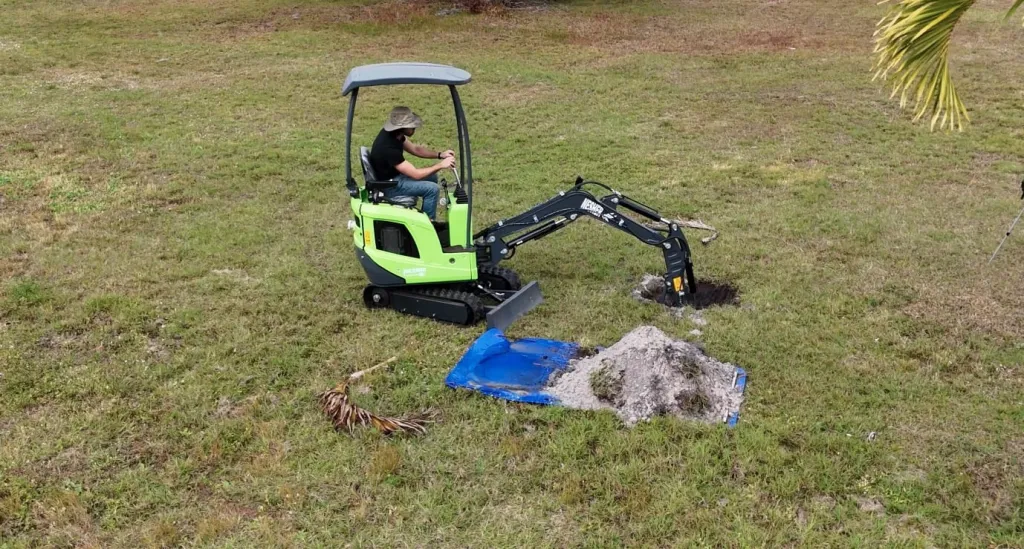
Common questions about the electric mini-excavators
The most common questions I get on these are run time and cost. With the 6-hour answer out of the way, that leaves pricing. To frame this answer, it’s important to understand what prices look like in this industry. There are VERY few sources for electric mini-excavators anywhere in the Western World. The JCB 19C-1E is one of the few options out there. Traditional heavy equipment companies don’t publicly share prices. You have to jump through hoops of JCB sales reps before they finally tell you that is a nearly US $100,000 machine.
But that machine also weighs around 1,500 lb more than the NESHER NX2500. A closer comparison would be the Bobcat E10e, which is roughly the same size and spec as the NESHER NX2500. Again, it takes a lot of digging (no pun intended), but ultimately you’ll find that it is priced at around US $60,000.
By comparison, the NESHER NX2500 is priced at US $19,600.
This isn’t to say that these machines are directly comparable, but they do have similar specs and perform similar tasks. Bobcat and JCB are certainly larger companies, but they cater to commercial users. The NX2500, on the other hand, finally brings the capability of electric mini-excavators to more average Joes and small businesses that can’t afford a $60k or $100k piece of equipment.
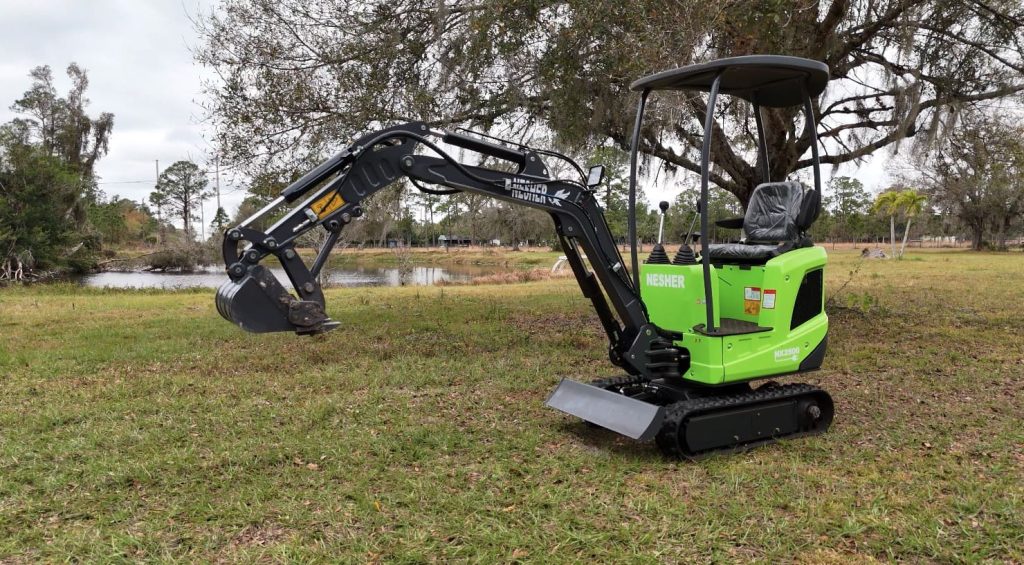
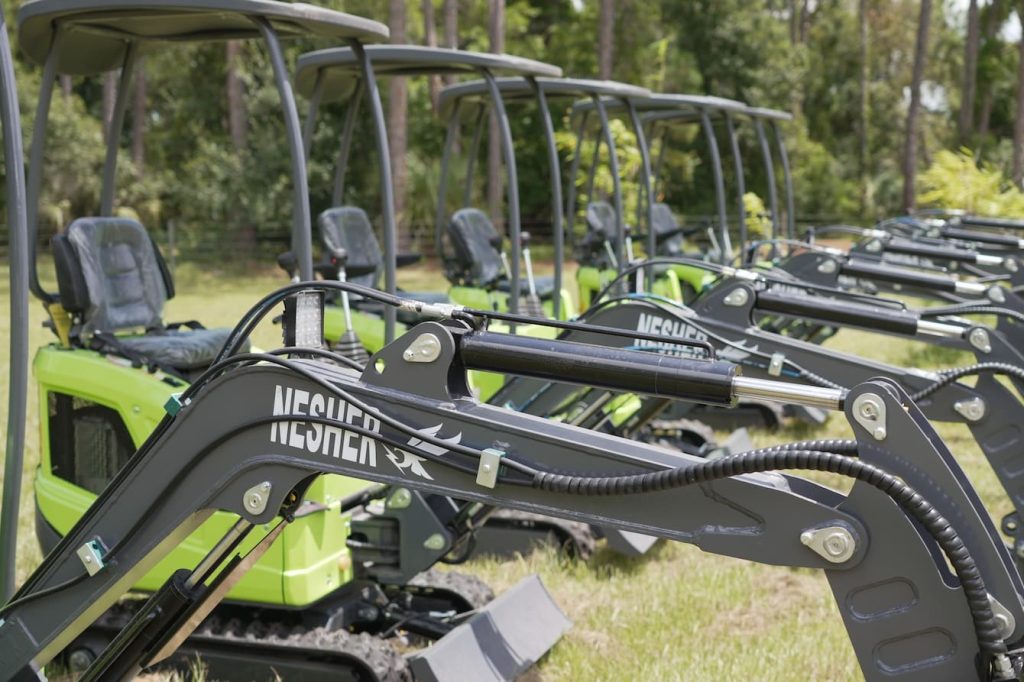
Another common question I get when people hear I import a lot of these types of things is “do you get to keep the container?”
Sometimes, yes. But it’s not as much that I get to keep and more that I had to buy it in advance. This is what is known as one-tripper. That means it is a new shipping container, and this is its first trip across the ocean.
In this case, I bought the container so I could keep it and use it as storage – basically a super sturdy and locking shed. You might have seen my article about turning a shipping container into a solar-powered charging shed complete with air conditioning. That’s one of the nice things about choosing to buy a one-tripper container, you can get very creative with them.
However, most of my imports are done using the shipping line containers. These are essentially borrowed from the container lines. Maersk or MSC or the other big names lend you a shipping container as part of the price of shipping with them, you fill it in China, empty it in the US, and then it goes back to the port for many more journeys in its future. That’s the most common and economical way to do it, but getting a few shipping containers of your own isn’t a bad thing either, if you have the space.
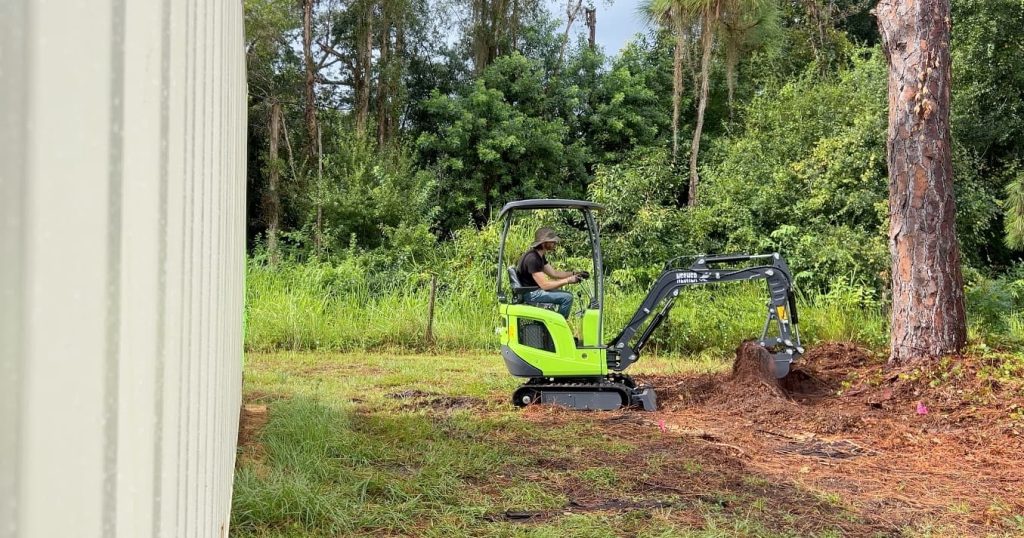
The last question that I often hear is simply, “Why electric?”
I get it, many old-school operators are of the “diesel or die” variety. The problem is, sometimes you get both. That diesel exhaust is a carcinogen. And unlike larger excavators with enclosed cabs and better exhaust manifold designs, most diesel-powered open-cab mini-excavators result in the operator’s face being located a mere 2-3 feet from a diesel exhaust pipe. That’s not how I want to spend my digging hours and I wouldn’t wish it upon anyone else.
Then you have to add on top of that the sound of an unisolated engine running inches beneath your thighs, the vibrations of that engine, the extended upkeep and maintenance of an engine with hundreds of moving parts, and the hassle of winterizing or other extra steps that required to keep such machines in good working order.
There’s a reason a power drill has a battery and an electric motor instead of a small gasoline engine, even though such engines are widely available for model building. Electric tools are simply nicer and more convenient to own and operate. Sure, 30 years ago we didn’t have the kind of motor and battery technology to make electric construction equipment a viable alternative. But now we do, and these machines are proof of it.
Top comment by Mor Cha
Maybe try painting flames on the side, make it look sportier. 😃
Are they more expensive than a no-name diesel-powered Chinese mini-excavator bought at auction for $5,200? Sure. But they are also cheaper to operate, longer lasting, safer, and more comfortable, and come backed by a US distributor with service and support, including a local inventory of spare parts. Electric might not be for everyone, but it is for me, and now I’ve seen how it is for many others as well.
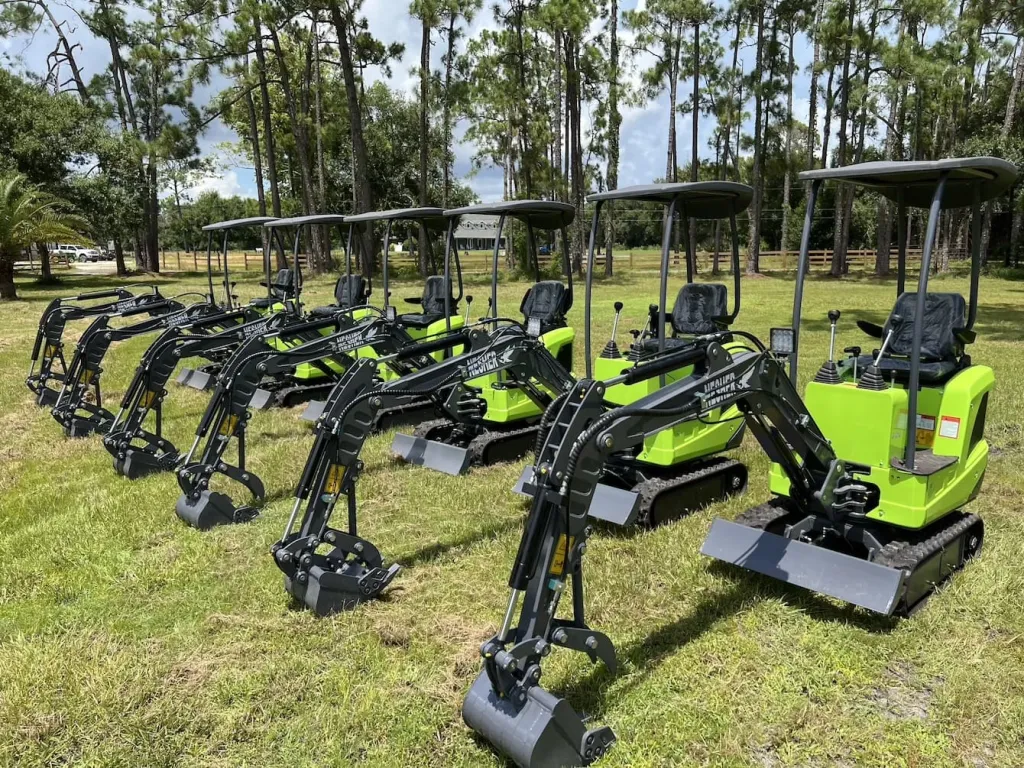
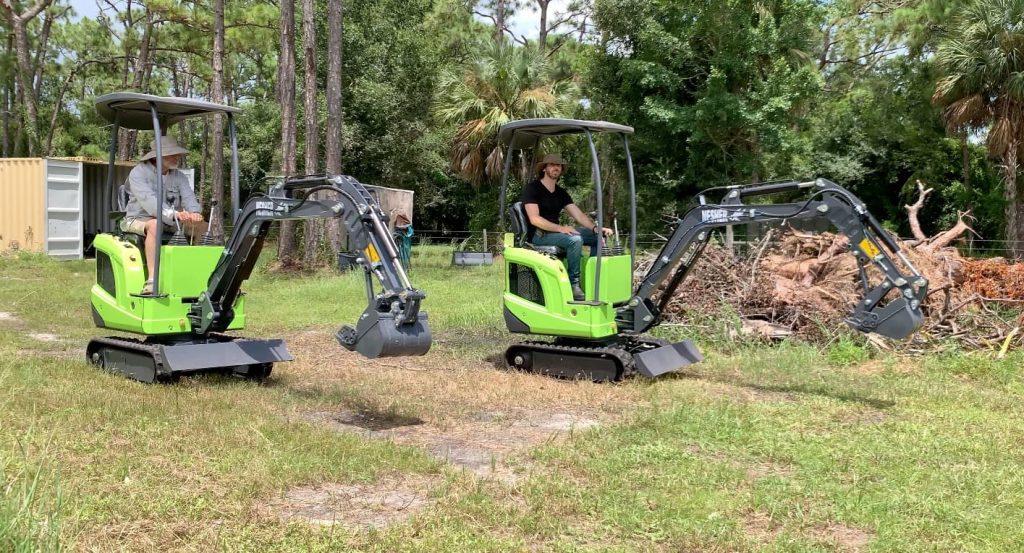
This is unlikely to be the last time I import something fun and interesting from China, though it certainly is the last one without new tariffs that were recently imposed. Like all businesses, we’ll be analyzing the impact of the new tariffs on our own operating costs, and unfortunately, we may have to raise prices on these machines as our costs rise.
But since a lot of what I bring in is for personal use (and I’ve got more fun EVs already in the works!), that’s largely a problem for me to deal with.
I’m looking forward to sharing the next fun EVs I get my hands on. Until then, I’ll have those hands busy digging!
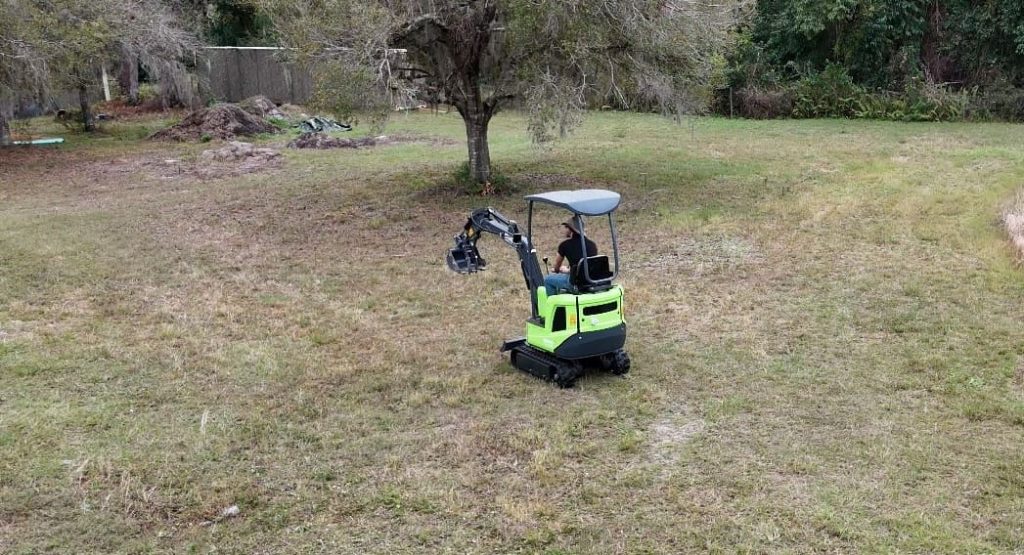
FTC: We use income earning auto affiliate links. More.

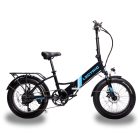

Comments